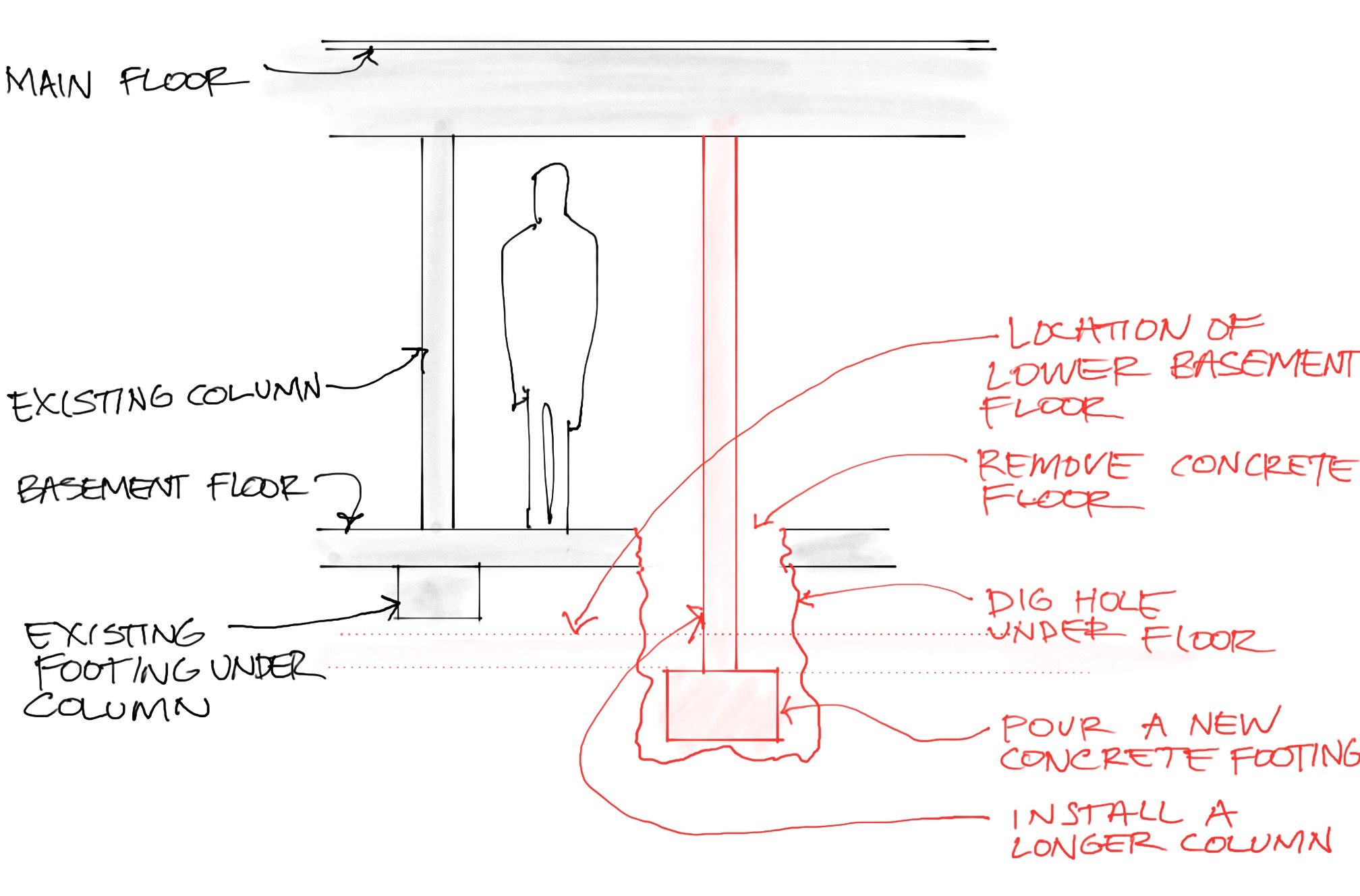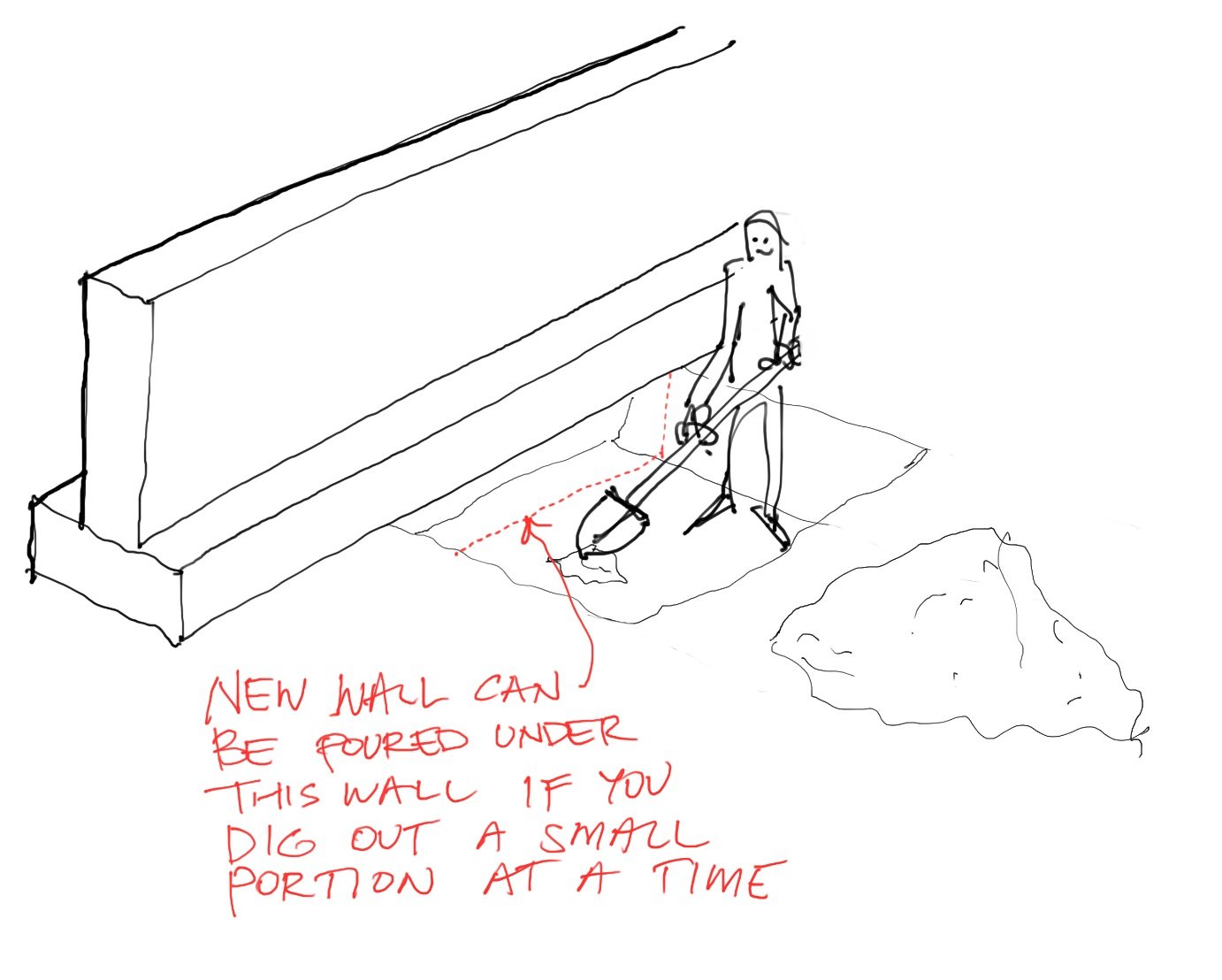Dimensions are measurements written on drawings. The intent of architectural drawings is to tell builders where to put things, what they are, and how big. Dimensions are one way to communicate “how big” and “where” something is.
This post addresses the “how big” and the “where to put it” since those go hand-in-hand. Similar to putting catsup on a hot dog, a dimension is not needed nor provided to instruct us on how to apply catsup on our hot dogs … instead, you put the catsup “from-here-to-there” from one end of the hot dog to the other. Nobody has ever needed to know the exact length of the hot dog to apply to catsup to it.
The same is true in construction. If you want to tile a floor, the builder needs to know the starting point and stopping point. The exact length really isn’t important for anyone else, so if we tell the builder, put tile from this wall to this doorway, then they can take whatever measurements they need - and the person doing the work is the best person to take those precise measurements for their own purposes.
If a client wants a window placed exactly in the middle of a room (centered between two other objects) or aligned with some specific item, that goal is what we communicate. We don't care if it is 10'-2, 10'-1 15/16", or 10'-2 1/16", so we WON'T tell the builder the DIMENSION of where to put the window. Again we don't care what the DIMENSION is. Instead, we care that the window is CENTERED in the room or ALIGNED with whatever. Therefore, instead of putting a random dimension on a drawing, we put the actual goal such as: "CENTER THIS WINDOW IN THIS ROOM."
Buildings aren't perfectly square, nobody's construction work is ever perfect, no tape measure gets pulled the same way each time, wood warps, wood has gaps, glue has thicknesses, plaster has thickness, etc. I can't provide a builder with the measurements for the things that they had already partially built - only the builder can get those measurements to see how wide a room is built (for example), and then divide that number in half to locate a window in the center of it.
We give builders enough info to build the project according to the client's approved goals. Then the builder starts building it within reasonable tolerances while working toward the goal written on the drawings. It is important to understand the goal when you are spending thousands of dollars of somebody's money to build them something, and nobody should get upset that they were given the responsibility to actually understand their client's actual goal. All too often, builders call and say, "there's no dimensions for the windows or doors on the drawings." My response is, "of course not. They don't care about the dimensions and neither should you. They only care that you put the window in the middle of the room, so that's why the drawings specifically say in writing to 'put the window in the center of the room.' Do you also need a dimension on the drawing to be able to do that? If so, measure the wall that you just built, send the dimension to me, and I will divide it in half for you. That's where you put the window. I don't know exactly how big you built the wall. I know how big it's supposed to be built, but what is supposed to happen and what already happened are typically not the same thing. So measure the wall, divide it in half, and put the window there just like the drawings already say in writing." (This was copied from a prior email to a builder who said his framers couldn’t figure out where to put a window even though the drawings said, in writing, to put it in the middle of the room.)
If a client wants something in the middle, why would a builder even want a specific dimension? As construction tolerance change, or as decisions throughout construction change and impact the rest of the building, an old dimension becomes outdated and useless, but the words "center in room" never become outdated. Communicating the actual goal is the most valuable information.
Builders also commonly refer to other projects with dimensions scattered all over the place as the "right way to do it." I've been on both sides of it working as a carpenter and architect, and I know with certainty that providing actual dimensions for things that are supposed to be centered or aligned with other things is very much the wrong way to do it. Doing it that way results in mediocrity and allows complacency where guys don't know what they are building - they are building numbers and not considering the actual purpose for the things they are building. The image above with the telephone pole shows what happens when builders just build to the numbers without knowing the actual goal. If we know “why” we do things, we can be more successful.
If you’d like to learn more about our design process, visit www.josharch.com/process, and if you’d like to get us started on your project with a feasibility report, please visit www.josharch.com/help















